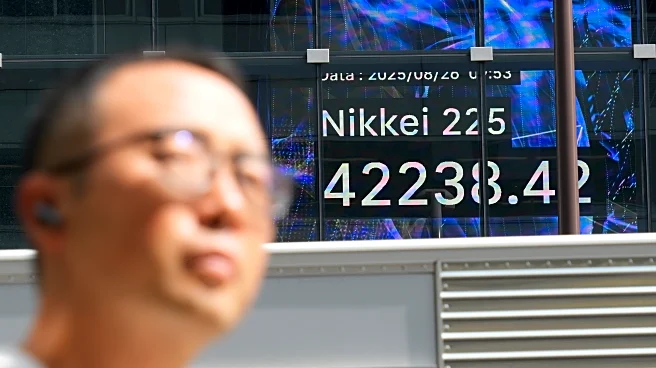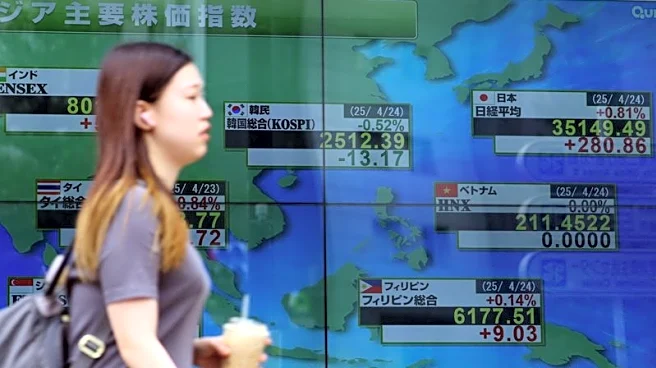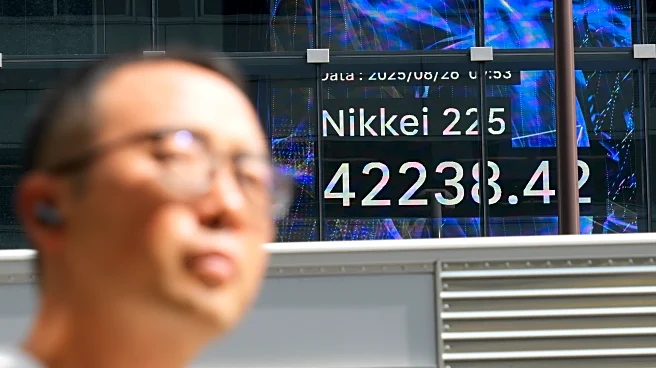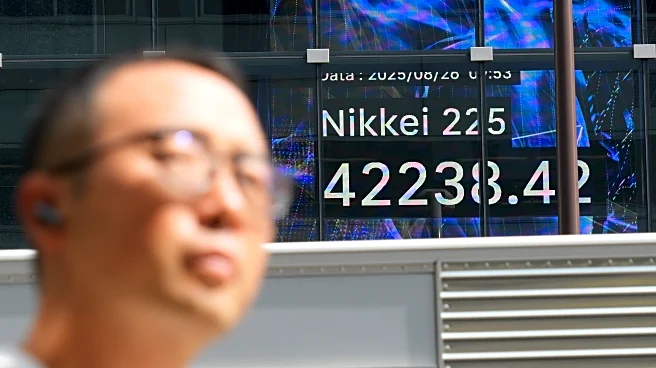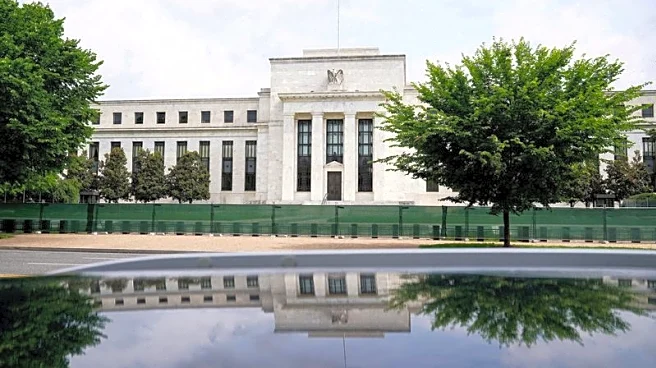What is the story about?
What's Happening?
The Federal Reserve is poised to make a significant decision regarding a rate cut in September 2025, with Governor Christopher Waller supporting a 25-basis-point reduction and Chair Jerome Powell indicating openness to easing due to labor market concerns. This decision comes amid a weakening U.S. dollar and a fluctuating bond market, presenting both risks and opportunities for investors. The U.S. Dollar Index has seen a 13% decline since January 2025, influenced by de-dollarization trends and central banks diversifying away from the dollar. Investors are considering strategic positioning in bonds, gold, and global equities, particularly in Asia, which may benefit from a weaker dollar.
Why It's Important?
The potential rate cut by the Federal Reserve could have wide-reaching implications for global markets. A weaker dollar historically correlates with a rally in the S&P 500, benefiting U.S. multinationals and reducing debt burdens in emerging markets. Investors are looking at quality bonds and gold as hedges against rising long-term yields, while global equities may see gains due to increased pricing power. However, the effectiveness of these strategies depends on the underlying causes of market movements, such as real rates versus growth optimism. The Fed's decision will be crucial in shaping investor strategies and market dynamics.
What's Next?
Investors must navigate the potential shift from a bear steepener to a bull steepener, which could reverse the dollar's decline and impact equities. The Federal Reserve's September decision will be a critical inflection point, with the trajectory depending on data-driven policy adjustments and global economic resilience. Stakeholders will closely monitor the Fed's actions and their effects on market stability and growth.
Beyond the Headlines
The broader implications of the Fed's rate cut decision include ethical and cultural dimensions, such as the impact on global economic inequality and the role of central banks in shaping financial stability. Long-term shifts in currency reliance and geopolitical uncertainties may also arise, influencing global trade and investment patterns.
AI Generated Content
Do you find this article useful?


